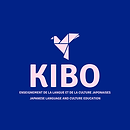


$1 Trial Lesson
Help your child turn Japanese into “their own words.”

👩🏫 Supported by teachers with 20+ years of experience
🌍 From Montreal, Canada|Trusted small-group classes
👥 Small Group Classes
A safe, supportive space tailored to each child’s growth
🎨 Japanese & Cultural Experiences Through Play
Songs, stories, and seasonal events make learning fun and natural
🌱 Gentle, Caring Instruction
Teachers nurture confidence and expression at every step
Growing Japanese roots into expression.
For many children growing up outside Japan with Japanese roots, Japanese is a heritage language—not quite a first language and not quite a foreign language. They often understand in the local language but get stuck when trying to say it in Japanese. Ayumi bridges that gap with age‑appropriate, level‑based classes that link what children already know to natural Japanese expression. Through everyday themes and cultural activities, kids learn to enjoy Japanese as their own voice while building confidence and a sense of identity.
“The kanji-building lessons finally clicked—dictionaries never did. The end-of-class read-aloud is our weekly highlight."
Parents of 7 year old student
"Kind teachers and zero test pressure. No comparisons—just joyful Japanese. Google Classroom follow-ups keep our kids growing."
Mother of 9 and 10 year old students
“Our child loves the A-I-U-E-O song. Picture-book read-alouds, word games, and hiragana practice feel like play.”
Parents of 7 year old girl
Program Features
Building language skills, confidence, and a deeper connection to Japanese identity.

Live Online Lessons
45 minutes once a week, 12 lessons per semester. Experienced teachers will help you develop your speaking and listening skills through real-time dialogue.

Digital Practice
playful online tasks (like hiragana practice) and teacher assignments keep skills growing between classes. Beginners can also enjoy fun self-study with tools like Duolingo to help master hiragana.

Small Classes by Age and Level
Classes are grouped by age and Japanese level—Kindergarten (3–6), Children (6–12), and Teens (12–17)—with levels from beginner to advanced so every child can grow at their own pace.

Mini Showcase
Each semester, children have short sharing opportunities to celebrate their progress, build confidence, and enjoy expressing what they’ve learned.

Seasonal Gift & Activity
Seasonal, culture-themed crafts and little surprises that let families enjoy Japanese traditions together at home.”

Special Events
Join special group activities—like singing and traditional games—that make Japanese language and culture fun, while connecting with peers in Japanese.
Register for $1 Trial Lesson Now!
Levels & Learning Outcomes
Kindergarden
(ages 4-6)
Ayumi Yochien is a class created with the desire to expose young children to the sounds of Japanese, teach them Japanese expressions, and give them the opportunity to experience the kind of play they would encounter in a Japanese kindergarten.
Our instructors, who have extensive educational experience in both Japan and overseas, conduct classes in a way that allows even young children to concentrate and participate.
Upper Elementary (ages 9–12)
-
Beginner: Aim to speak in Japanese only for basic greetings, daily expressions, and Q&A. Intro to hiragana, katakana, and starter kanji.
-
Intermediate: Strengthen foundations with reading that includes early‑grade kanji; write short pieces and present; complete up to Grade 3 kanji.
-
Advanced: Communicate fully in Japanese; deepen reading & composition; progress into Grade 4+ kanji.
Lower Elementary (ages 6–9)
-
Beginner: Link everyday knowledge (from English/French) to Japanese words and phrases. Write their own name in hiragana/katakana. Recognize the full hiragana chart and read simple words aloud.
-
Intermediate: Comfortable short exchanges; reinforce daily expressions and cultural stories; complete hiragana & katakana and start Grade 1–2 kanji.
-
Advanced: Communicate in Japanese; handle more complex expressions, reading, and simple writing; consolidate Grade 2–3 kanji.
Teens
(ages 12–17)
-
Beginner: Review familiar greetings and everyday phrases; build toward answering and speaking entirely in Japanese. Intro to kana and foundational kanji.
-
Intermediate: Extend from school‑level Japanese toward real‑world usage with stronger reading/writing and presentations.
-
Advanced: Read with mid‑grade kanji, discuss nuanced topics, and develop writing for real‑life contexts.
What Kids Gain
Tune their ears, unlock their voice
Children get used to the rhythm and sounds of Japanese through greetings, songs, fingerplay, poems, and read‑alouds—so Japanese comes out naturally.
Appreciation for Culture and Diversity
Through seasonal events, word play, and hands-on crafts, children experience the charm of Japanese traditions and the richness of its culture—fostering appreciation, identity, and a sense of belonging.
Enjoyment of Reading and Writing Japanese
Beginners master the 46 hiragana sounds, grow comfortable with katakana, and start exploring basic kanji through fun quizzes and reading activities. More advanced students deepen their reading fluency, expand vocabulary, and practice writing with greater accuracy and expression.
“I said it in Japanese!” confidence
By learning greetings, everyday conversations, and mini-presentations, children expand their vocabulary and expressions—gaining the confidence to share their own thoughts and ideas in Japanese.

01
Schedule & Format
-
Frequency / Duration: once a week, 45 minutes (12 sessions per term)
-
Term flow: 6 sessions → 2‑week break → 6 sessions
-
Typical times: Mon/Tue/Thu from 5:00 p.m. ET (varies by term)
03
How We Check Progress
In‑class activities, light quizzes, and mini‑showcases help teachers see understanding and support each child’s next step.
02
What You’ll Need
-
Computer with mic & camera, writing tools
-
Printable worksheets (shared digitally)
-
Occasional craft materials (e.g., origami)
04
Participation Notes
-
A parent’s presence on camera is not required, but please stay nearby to help if needed.
-
Please avoid eating during class (spill‑proof drinks are okay).